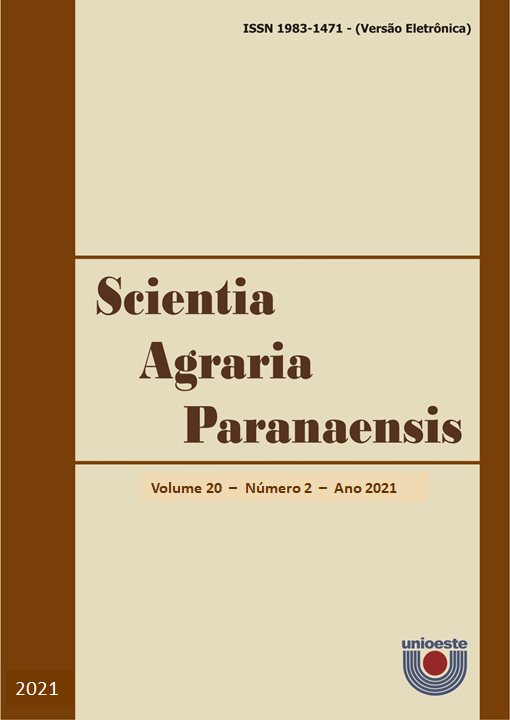Growing space in a 35-year-old Pinus taeda stand
DOI:
https://doi.org/10.18188/sap.v20i2.27082Resumo
Considering the economic importance of the Pinus species in Brazil, especially in the southern region, this study was carried out to fill some gaps and assist in the production processes of this species. The specific objective was to evaluate the influence of different growing space regimes in experimental plantations of Pinus taeda L., aged 35 years, without thinning, located in the state of Santa Catarina. Diameter at breast height (DBH) and total height data were collected, and the Gamma and Weibull (3P) probability density functions (PDF) were used to describe the structure of the diameter and height variables, respectively. Then multivariate analysis and discriminant functions were applied to identify the correlation of these variables. For qualitative variables, tree health was assessed in three classifications: 1 - Healthy, with no apparent damage; 2 - Initial stage of deterioration by pests and/or diseases; and 3 - Advanced stage of deterioration by pests and/or diseases. The trunk quality variable was also evaluated in three classifications: 1 - Trunk without apparent defects; 2 - Slightly crooked trunk, however cylindrical and devoid of considerable ramifications; and 3 - Trunk with strong tortuosity or bifurcation. The results showed that growing space directly affected the average diameter. Stands with greater space per tree maximized the variables when considering height and DBH together. Stands with less growing space, on the other hand, favored better trunk quality, and the dominant individuals in height had superior health and trunk quality compared to the others.
Downloads
Publicado
Como Citar
Edição
Seção
Licença
Aviso de Direito Autoral Creative Commons
Política para Periódicos de Acesso Livre
Autores que publicam nesta revista concordam com os seguintes termos:
1. Autores mantém os direitos autorais e concedem à revista o direito de primeira publicação, com o trabalho simultaneamente licenciado sob a Licença Creative Commons Attribution que permite o compartilhamento do trabalho com reconhecimento da autoria e publicação inicial nesta revista.2. Autores têm autorização para assumir contratos adicionais separadamente, para distribuição não-exclusiva da versão do trabalho publicada nesta revista (ex.: publicar em repositório institucional ou como capítulo de livro), com reconhecimento de autoria e publicação inicial nesta revista.
3. Autores têm permissão e são estimulados a publicar e distribuir seu trabalho online (ex.: em repositórios institucionais ou na sua página pessoal) a qualquer ponto antes ou durante o processo editorial, já que isso pode gerar alterações produtivas, bem como aumentar o impacto e a citação do trabalho publicado (Veja O Efeito do Acesso Livre).
Licença Creative Commons
Esta obra está licenciada com uma Licença Creative Commons Atribuição-NãoComercial-CompartilhaIgual 4.0 Internacional, o que permite compartilhar, copiar, distribuir, exibir, reproduzir, a totalidade ou partes desde que não tenha objetivo comercial e sejam citados os autores e a fonte.


